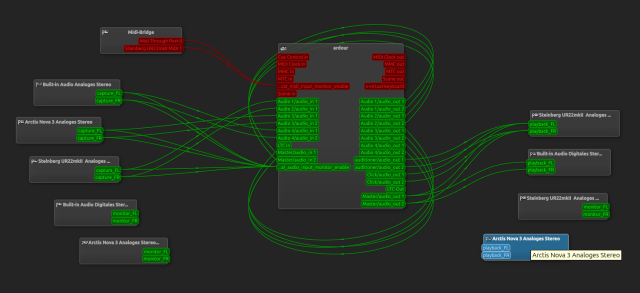Search
Items tagged with: jack
Nimm #pipewire, haben sie gesagt. Damit wird alles einfacher, haben sie gesagt.
Naja, man ist da sicher auf einem guten Weg. Aber das Jonglieren mit config Dateien und Einstellungen erinnert mich doch etwas daran, wie es vor reichlich zehn Jahren war, wenn man #jack und #pulseaudio zusammenbringen wollte.
Zwar muss jetzt nicht soo viel konfiguriert werden, aber man muss schon ein wenig herumsuchen...
Mit meinem install #Script für das #Audio Zeug hab ich es nun ohne jack versucht. Mal sehen ob es sich mit #ubuntu 24 #Linux bewährt:
codeberg.org/cExplorer/install…
Dankbar bin ich für Ideen dazu und für Hinweise auf Fehler.
#Ardour #DAW #LinuxAudio

PipeWire 1.0 Officially Released » Linux Magazine
PipeWire was created to take the place of the oft-troubled PulseAudio and has finally reached the 1.0 status as a major update with plenty of impro...Linux Magazine


